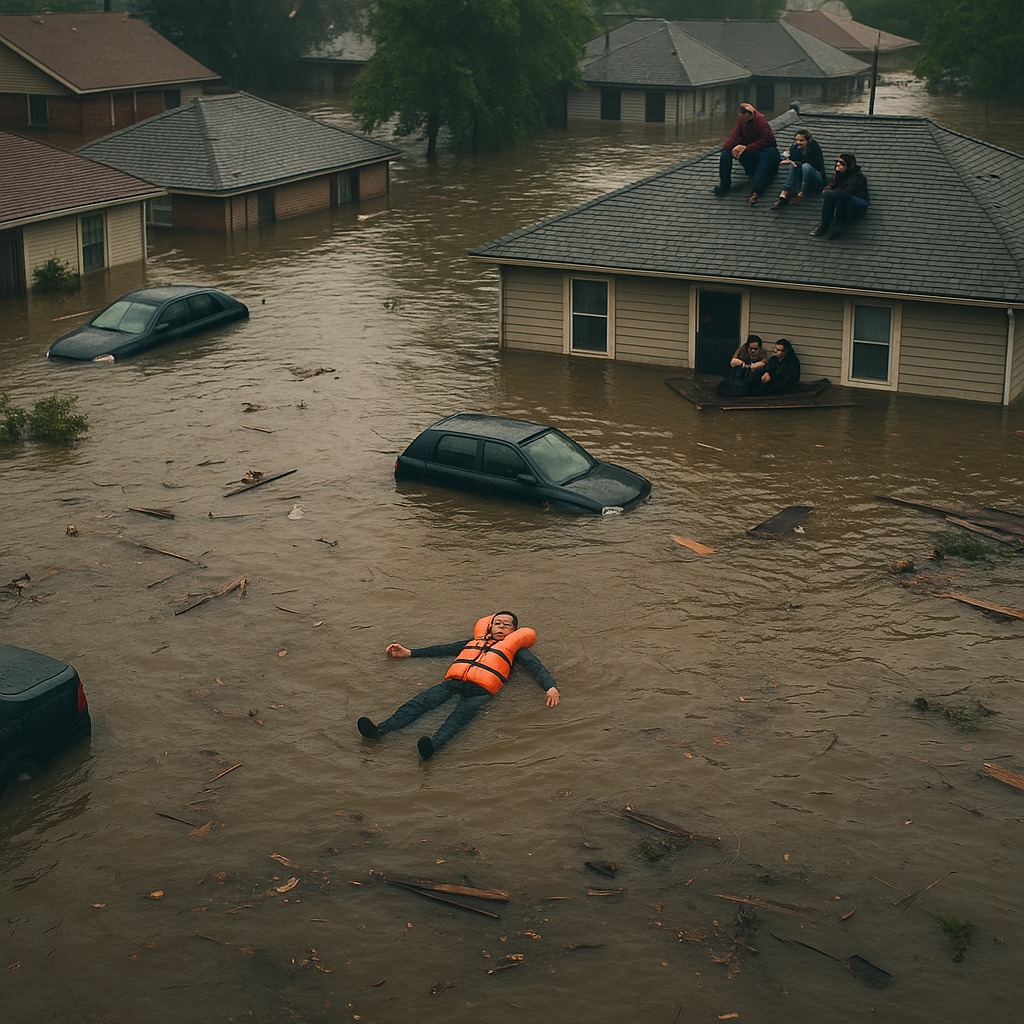Floods are among the most common and deadly natural disasters worldwide. Whether caused by flash floods, river overflows, or storm surges, floodwaters can rise quickly and create life-threatening situations. In such chaos, an emergency life preserver isn’t just a precaution—it’s a survival essential. Unlike makeshift flotation devices, life preservers are specifically designed to keep individuals afloat, stable, and safe until help arrives.
In this guide, we’ll explore the benefits of having an emergency life preserver during flood situations, the different types available, and why they deserve a place in every disaster preparedness kit.
Why Flood Survival Tools Matter
Floodwaters are unpredictable. They can sweep away vehicles, collapse homes, and carry strong currents that even experienced swimmers can’t withstand. Preparing for floods means having more than food, water, and flashlights—it means having gear that can save your life in seconds. Life preservers provide that safety margin, especially when evacuation routes are blocked or when floodwaters rise faster than expected.
1. Immediate Buoyancy in Strong Currents
Unlike improvised flotation devices such as inner tubes or wooden planks, life preservers are designed for instant buoyancy. In a flood, where panic and exhaustion set in quickly, this feature can mean the difference between survival and drowning.
2. Protection Against Fatigue and Panic
Flood situations often last for hours. Even strong swimmers tire quickly in fast-moving or debris-filled water. A life preserver conserves energy, keeps your head above water, and reduces the risk of panic-induced mistakes.
3. Visibility for Rescuers
Many life preservers are equipped with bright colors, reflective strips, and even whistle attachments, making them easier for rescue teams to spot. This increased visibility speeds up rescue efforts and enhances survival chances.
4. Essential for Non-Swimmers and Children
Floods don’t discriminate. Families, including young children, elderly members, and those who can’t swim, face immense risks. Life preservers provide universal safety, ensuring vulnerable individuals remain buoyant until they can be pulled to safety.
5. Protection in Urban and Rural Flooding
-
Urban flooding: Life preservers help navigate submerged streets, open manholes, and floating debris.
-
Rural flooding: They provide safety when rivers overflow, or when trapped in farmland and low-lying areas.
-
Storm surges: During hurricanes, storm surges can reach dangerous depths quickly, making flotation critical.
No matter the scenario, a life preserver adapts to the environment.
6. Different Types of Life Preservers for Flood Preparedness
When choosing a life preserver for your emergency kit, it’s important to understand the options:
-
Foam-filled preservers: Durable, always buoyant, and reliable in emergencies.
-
Inflatable preservers: Compact and easy to store but require activation.
-
Hybrid preservers: Combine foam and inflatable technology for flexibility.
Each type has its advantages, but foam-filled life preservers are the most reliable for flood scenarios since they don’t depend on inflation mechanisms.
7. Compact and Easy to Store
Life preservers are surprisingly compact and can be stored in:
-
Emergency backpacks
-
Vehicle survival kits
-
Home disaster supply closets
Their lightweight design ensures they don’t take up much space, making them a practical addition to any emergency kit.
8. Enhances Family and Community Preparedness
Having life preservers isn’t just about personal safety—it’s about collective resilience. Families with life preservers are better equipped to protect children, neighbors, and even pets during an evacuation, strengthening community survival odds.
How to Add Life Preservers to Your Emergency Plan
-
Choose reliable models: Opt for coast guard-approved or disaster-rated life preservers.
-
Size appropriately: Ensure every family member, including children, has one that fits.
-
Store accessibility: Keep them near exits, in vehicles, or in go-bags.
-
Practice using them: Familiarize your family with how to wear them quickly.
Frequently Asked Questions (FAQs)
Q1: Can I use pool floats instead of a life preserver in a flood?
No. Pool floats are not designed for strong currents or long-term buoyancy. Life preservers are purpose-built for survival.
Q2: How many life preservers should a family keep?
Each family member should have one properly sized preserver. It’s also wise to keep extras for guests or neighbors.
Q3: Are inflatable life preservers reliable in floods?
They can work, but they require activation. Foam-filled preservers are more dependable in sudden emergencies.
Q4: Do life preservers expire?
Foam life preservers last many years if properly cared for. Inflatable ones require maintenance and periodic replacement of CO₂ cartridges.
Q5: Should I include life preservers in my car emergency kit?
Yes. Cars are often caught in flash floods, and having a preserver inside can be lifesaving.
Q6: Where can I buy emergency-grade life preservers?
You can find them at outdoor supply stores, boating shops, or specialized disaster preparedness retailers. Here’s a useful resource from the Red Cross on flood safety.
Conclusion: A Small Investment for Maximum Safety
Floods are fast, unpredictable, and deadly—but preparation saves lives. An emergency life preserver is a low-cost, high-value addition to your disaster kit that offers immediate protection and peace of mind. Whether you live in a coastal city, near a river, or in a flood-prone rural community, this survival tool can keep you and your loved ones safe when every second counts.
By equipping your family with life preservers, you’re not just preparing for the worst—you’re ensuring the best possible chance of survival.

